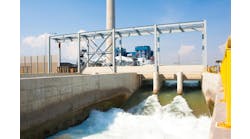Agency releases TRI data
Nine contaminants will not require SDWA regulation
DOT issues security advisory to truckers
NRC comments on ocean petroleum releases
Grayson is a partner with Jenner & Block, Chicago, working in the firm's Environmental Law practice group, www.jenner.com/practice/environ/environ.html. Contact her via e-mail at [email protected].
